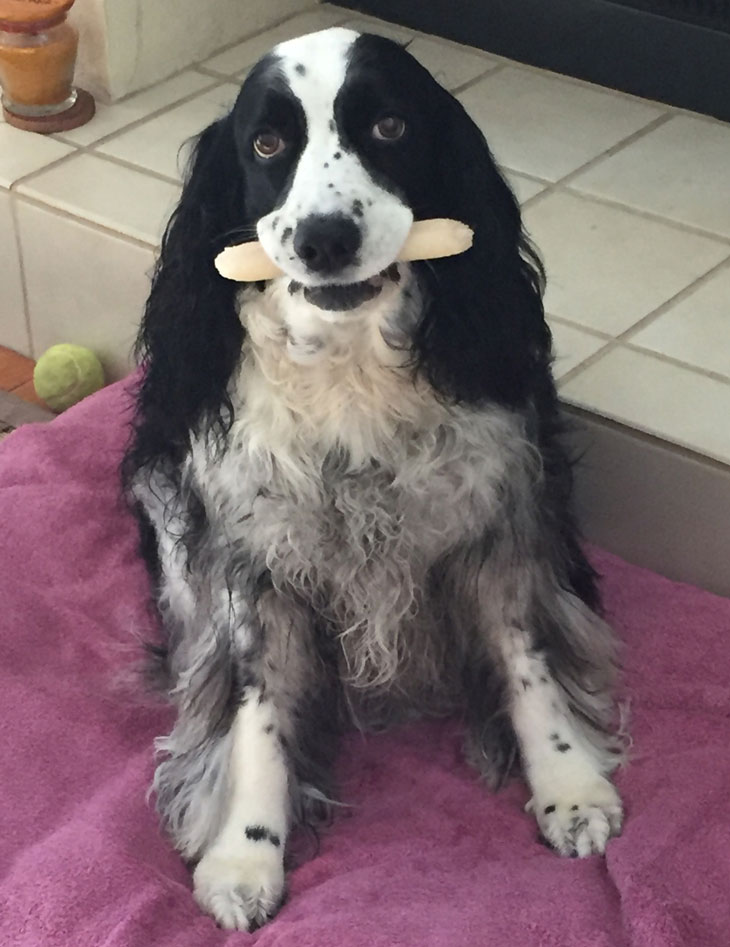
OSU research saves Florida dog
Thursday, October 17, 2019
Research can be a tedious, long process as researchers search for answers, complete studies and publish results. Thanks to dog owner Nadine Blyn of Holiday, Florida, a group of Oklahoma State University researchers know their work paid off in a big way.
“I received a random email from Nadine,” says Dr. Laura Nafe, assistant professor of small animal internal medicine at Oklahoma State University’s College of Veterinary Medicine. “Her dog, Nala, was being treated for immune-mediated hemolytic anemia, a condition where the red blood cells fall below normal values or function improperly.”
Here’s what Nadine’s message said:
“In May of 2017, Nala, age 6, was being treated for IMHA in Tampa, Florida. One of her medications was Cyclosporine. A few days after being administered the Cyclosporine, she developed lesions on her paw pads. I frantically searched the internet and found your recently published (February 2017) article on disseminated phaeohyphomycosis in a dog (https://www.ncbi.nlm.nih.gov/pms/articles/PMC5328716/) and sent a copy of that article to the dermatologist in Tampa. We rushed her to the veterinary clinic for a biopsy of the lesions, immediately started Nala on Voriconazole, and discontinued the Cyclosporine. The biopsy was positive for saprophytic fungus. It took a month or so, but her lesions finally cleared. Following months of Prednisone, Azathioprine, Aspirin, Prilosec and Carafate therapy, Nala recovered from the IMHA. She will be 9 years old in January. I am so grateful that your article was published prior to Nala’s incident and that I found it on the NIH website. I would like you to know that your research is appreciated more than you are aware. Please let your co-authors know that their efforts are appreciated as well. Phaeohyphomycosis can be fatal if left untreated. That’s why my discovery of the research paper saved Nala’s life. If we had waited to treat Nala for the one to three weeks that it took to receive the biopsy results, she might have succumbed. That’s why the research was so important to me.”
“Our study concluded that cyclosporine likely contributed to the development of phaeohyphomycosis in that particular case,” said Nafe. “You spend a lot of time on research and even though your work is published, you don’t always see the actual application results. It's nice to know our hard work paid off and Nadine was able to use that research information to help treat her dog, Nala. Research really does matter.”
Nafe is a board-certified small internal medicine veterinarian at the OSU College of Veterinary Medicine’s Veterinary Medical Hospital. Co-authors on the research were Drs. Lana Rothenburg, Timothy Snider, Allison Wilson, Anthony Confer, Akhilesh Ramachandran, Rinosh Mani, and Theresa Rizzi.
MEDIA CONTACT: Taylor Bacon | Public Relations and Marketing Coordinator | 405-744-6728 | taylor.bacon@okstate.edu
